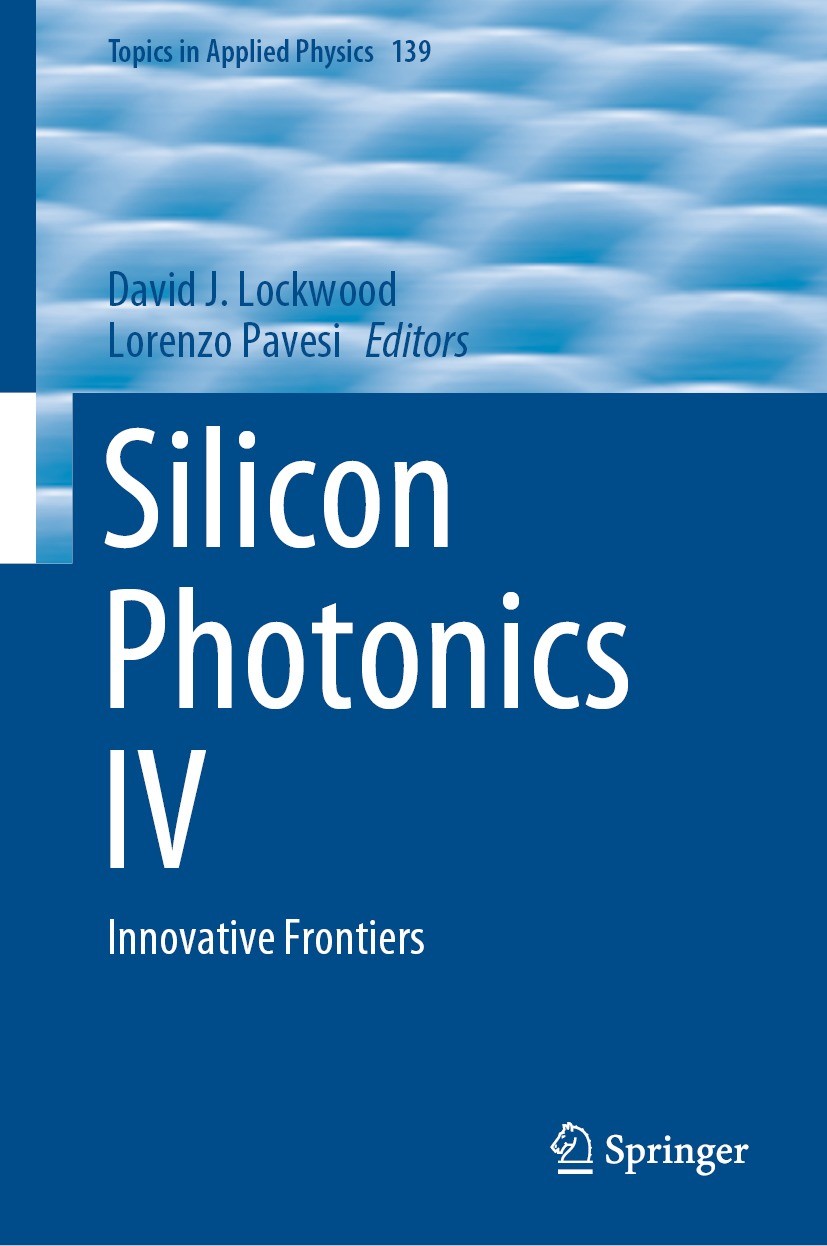| 书目名称 | Silicon Photonics IV | | 副标题 | Innovative Frontiers | | 编辑 | David J. Lockwood,Lorenzo Pavesi | | 视频video | http://file.papertrans.cn/868/867330/867330.mp4 | | 概述 | Gives a state-of-the-art report on integrated silicon photonics.Covers new research into light production in Group IV materials.Valuable reference to researchers and graduate students alike | | 丛书名称 | Topics in Applied Physics | | 图书封面 |  | | 描述 | .This fourth book in the series .Silicon Photonics. gathers together reviews of recent advances in the field of silicon photonics that go beyond already established and applied concepts in this technology. The field of research and development in silicon photonics has moved beyond improvements of integrated circuits fabricated with complementary metal–oxide–semiconductor (CMOS) technology to applications in engineering, physics, chemistry, materials science, biology, and medicine. The chapters provided in this book by experts in their fields thus cover not only new research into the highly desired goal of light production in Group IV materials, but also new measurement regimes and novel technologies, particularly in information processing and telecommunication. The book is suited for graduate students, established scientists, and research engineers who want to update their knowledge in these new topics.. | | 出版日期 | Book 2021 | | 关键词 | Integrated silicon optics; Optical interconnects on silicon basis; Optoelectronics of silicon; Silicon- | | 版次 | 1 | | doi | https://doi.org/10.1007/978-3-030-68222-4 | | isbn_softcover | 978-3-030-68224-8 | | isbn_ebook | 978-3-030-68222-4Series ISSN 0303-4216 Series E-ISSN 1437-0859 | | issn_series | 0303-4216 | | copyright | The Editor(s) (if applicable) and The Author(s), under exclusive license to Springer Nature Switzerl |
The information of publication is updating

|
|
 |Archiver|手机版|小黑屋|
派博传思国际
( 京公网安备110108008328)
GMT+8, 2025-12-14 21:20
|Archiver|手机版|小黑屋|
派博传思国际
( 京公网安备110108008328)
GMT+8, 2025-12-14 21:20


